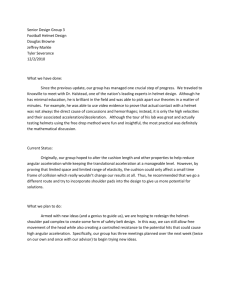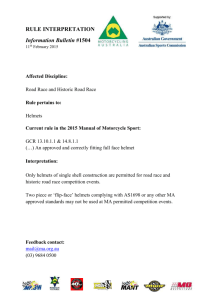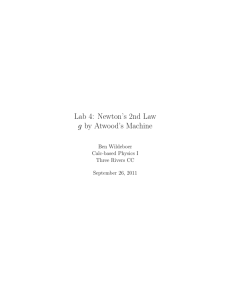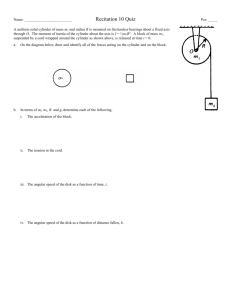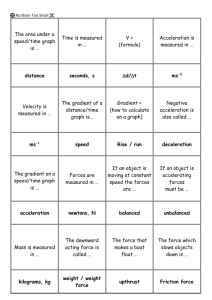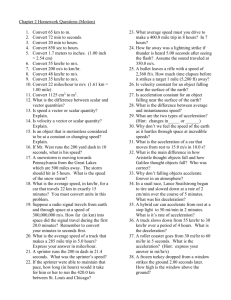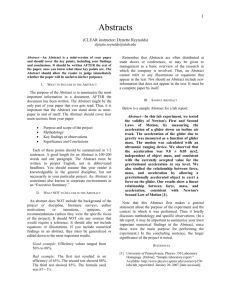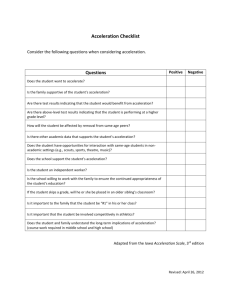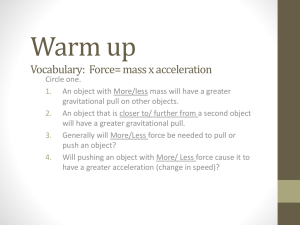Biomechanics of Sports Related Concussions
advertisement
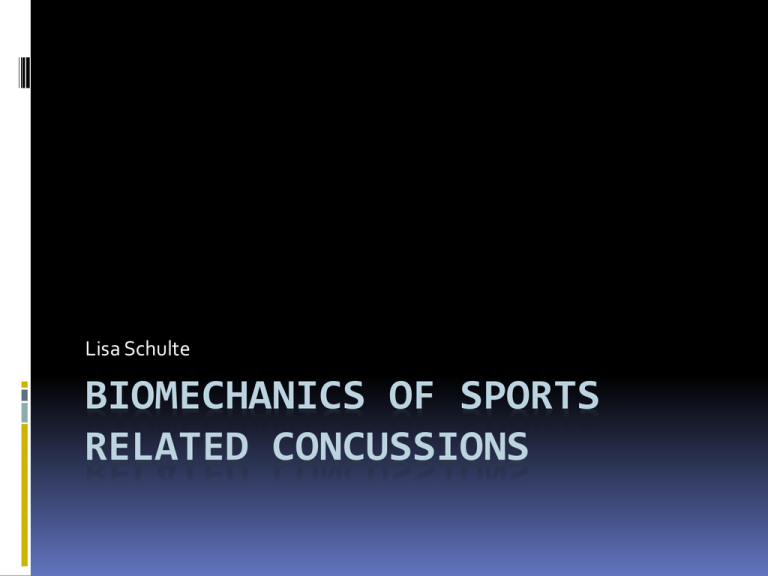
Lisa Schulte BIOMECHANICS OF SPORTS RELATED CONCUSSIONS Introduction Participation in sporting events account for roughly 1.6 to 3.8 million brain injuries annually. A concussion results from a rotational acceleration or deceleration injury to the head. Terms Force- (N)the action of one body on another which will cause acceleration of the 2nd body unless acted on by an equal/ opposite action Deformation- change in the shape of the body undergoing the force Injury- the result of the force Focal/ Diffuse Factors Affecting Force Analysis Type of Load direct, indirect Types of Force Translational (linear), Rotational, Angular Direction of Force Magnitude of Force Duration of Force Shorter duration=less damage Rate of Force Region of the Brain Head Impact Telemetry System HITS is a wireless monitoring system used to identify hits capable of producing an injury. Helmets equipped with HITS look and function the same as other helmets Accurately identifies the location to ± .41 cm Impacts 15 g or greater are recorded Applying Newton’s Laws Formula for calculating acceleration a=(V² – Vo²)/2sg Example: A=(-3.658 m/s)²/ (2)(0.152m)(9.8 m/s²)=4.49 g Formula for Newton Second Law of Motion F=mass x acceleration Protecting the Athlete Helmets Pressure= Force/Area Mouth Guards The cushioning effects of a mouth guard increase time and distance of deceleration Recent Developments Return to Play Long Term Effects of Concussions NFL and NCAA rule changes Concerns with Young Athletes


